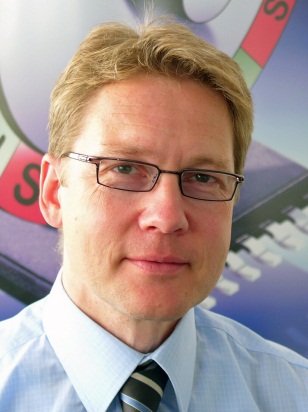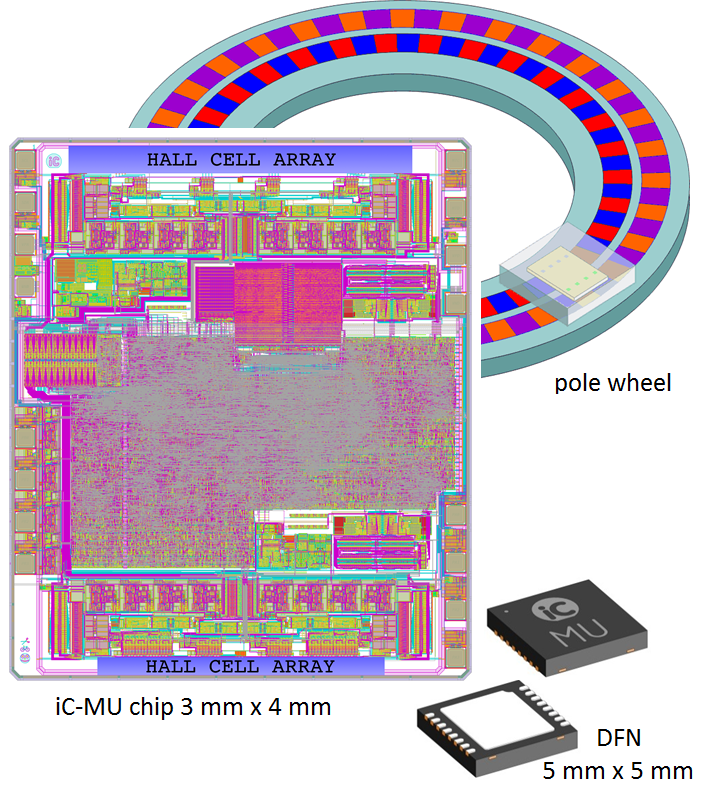
iC-Haus GmbH is a leading, independent German manufacturer of standard iCs (ASSP) and customized ASiC semiconductor solutions with worldwide representation. For more than 25 years the company has been active in the design, production, and sales of application-specific iCs for industrial, automotive, and medical applications.
The iC-Haus cell libraries in CMOS, bipolar, and BCD technologies are specifically suited to realize the design of sensor, laser/opto, and actuator ASiCs, amongst others. The iCs are assembled in standard plastic packages or using the iC-Haus chip-on-board technology to manufacture complete microsystems, multichip modules, and optoBGA/QFN in conjunction with sensors.
Joachim Quasdorf at iC-Haus GmbH shares his views with Electronics Maker about the compnay products, market growth, technical abilities and future plans.
- Introduce iC-Haus. What are your basic products and key applications?
iC-Haus is a leading specialist supplying monolithic mixed-signal solutions and microsystemsfor industrial, automotive and medical applications, requiring reliable long term supply to support the extended product life cycles in this market segments. That can either be an application specific customized iCs (ASiCs) or application specific standard products (ASSP). In the automotive market segment for example, we are supplying now over 20 years safety related product and the production flow at iC-Haus is fully qualified to supply this kind of products at the highest possible quality standards. For industrial customer iC-Haus supplies a wide range of Standard ASSP-solution like:
– Magnetic and optical Single-Chip Encoder
– Safety Light Curtain receiver and transmitter
– Integrated Laser Driver iCs and industrial 24V I/O-Driver
– Optical Sensor iCs, as well as MEMS-sensor interfaces
Examples for the last two mentioning are a Single-Chip solution for optical triangulation and one forthermal MEMSin flow, gas and pressure sensors.
- As an IC maker, how do you bring the latest technological advances in chip design?
Technology advances in the market areas we served are different from those in consumer, telecom or computer. The primary focus has to be on robust technologies, packaging and system-on-chip integration to provide a sweet spot for subsystems solution at our customer. One example for this approach is the integration of magnetic Hall cells together with all required high precision mixed-signal processing onto anabsolute magnetic single-chip encoder with a resolution of 18bit. Another example is the integration of multiple photo sensors to defineopticalsingle-chips for position encoders. Both single-chip solutions are shown below. As you can imagine, optical packaging plays here a key role to allow these innovative products.
Magnetic and optical Single-Chip system integration examples

- What are your key strengths in offering ASiC/ASSP?
The integration of high performance analog and digital functions on the same chip requires specializedcell libraries for effective application specific integration. Over the last 30 years iC-Haus has developed larger cell librariesfor variousprocess technologiesand for the application areas we serve. If the customer application volume justifies the NRE cost, or if there is no other way to protect designs or solve space constraints, an ASiCdesign can be considered. However, many customersdo prefer application-specific standardICs available from the shelf if it fits their application. Those are already fully qualified and documented, without the burden of NREcost, and available long term as part of our supply policy.Furthermore, our strengthin being fabless isthat we access several qualified silicon foundriesand so can agree to a project-specific second source strategy if required.
- How do you look at the trends for chip design? Is it challenging your products?
As mentioned, mixed-signal designs are very different from the typical digital integration, where any progress of silicon process technology is driving the trends in chip design. Switching to a new technology is taking place if the analog performance benefits from it, if interfaces to the harsh industrial or automotive world are available, and if the complexity level demands for it. A challenging factor is the increase in wafer size and NRE cost for applicationsjust asking for low to medium volumes.
- Can you outlook on sensor IC products and growth in this area?
The sensors IC market is with around 10% CAGR one of the fastest growing component markets. This growth is driven by the need to sense the real world for the data processing world; we like to do decisions with. Our focus is on new sensors combining different technologies, like LED, laser diodes or MEMS, with the CMOS IC into completesubsystems, either as a microsystem or a typical package.
- How do you sale your products? Can you explain your marketing strategy?
We are supplying our products through local sales partners in industrialized countries worldwide. Some larger customersare served directly with help of the local partner. We are using a muchtargeted marketing approach to reach the customer with our very specialized value-added solutions.
- Do you have any sale office in India or any distributor? Can we ask you about India market potential?
We are serving the customers in India through our distributor Omniscient Electronics Pvt. Ltd in Bangalore. The electronic component markets we serve, such as industrial, automotive or medical, are in India in an early, but growing development stage. So we are investing into long term relations with new and existing customers to follow the market development and help customers to improve their products.
- Can you share with us your percentage of growth rate in 2013 and what is your envision about future growth?
iC-Haus has successfully and continuously grown with our worldwide customer base over the last 30 years. The only exception is 2009, where the industry was suffering from the financial crisis. This year we have plans to grow in the two digit figure and depending on the market conditions we hope so for the near future as well. The market growth potential outlook for the three market segments we serve is very stable and long term also very positive.






